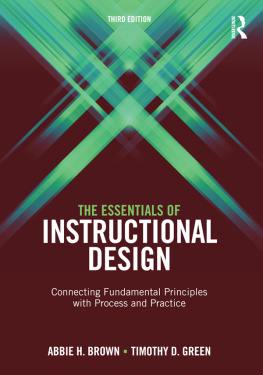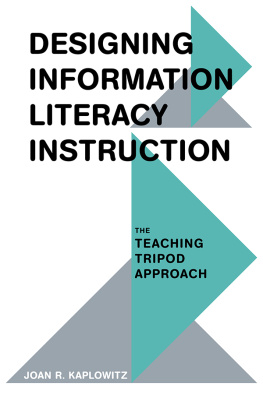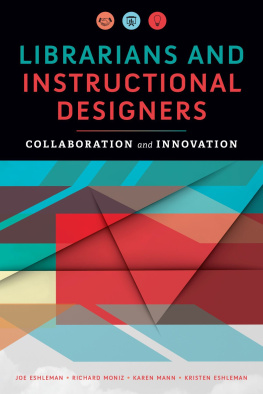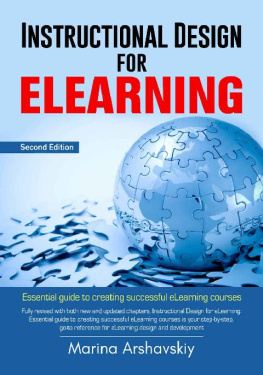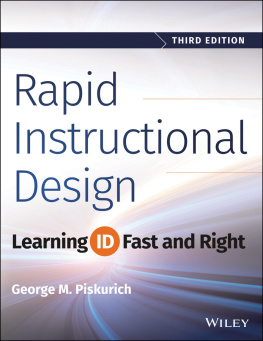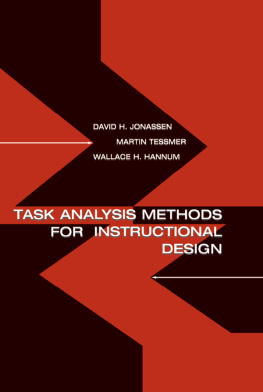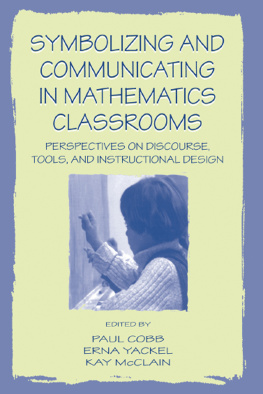Third edition published 2016
by Routledge
711 Third Avenue, New York, NY 10017
and by Routledge
2 Park Square, Milton Park, Abingdon, Oxon OX14 4RN
Routledge is an imprint of the Taylor & Francis Group, an informa business
2016 Taylor & Francis
The right of Abbie H. Brown and Timothy D. Green to be identified as the authors of this work has been asserted by them in accordance with sections 77 and 78 of the Copyright, Designs and Patents Act 1988.
All rights reserved. No part of this book may be reprinted or reproduced or utilized in any form or by any electronic, mechanical, or other means, now known or hereafter invented, including photocopying and recording, or in any information storage or retrieval system, without permission in writing from the publishers.
Trademark notice: Product or corporate names may be trademarks or registered trademarks, and are used only for identification and explanation without intent to infringe.
First edition published 2006 by Pearson/Merrill Prentice Hall
Second edition published 2010 by Pearson
Library of Congress Cataloging in Publication Data
Brown, Abbie.
The essentials of instructional design : connecting fundamental
principles with process and practice / by Abbie H. Brown, Ph.D., East
Carolina University Timothy D. Green, Ph.D., California State University,
Fullerton. Third edition.
pages cm
Includes bibliographical references and index.
1. Instructional systemsDesign. I. Green, Timothy D., 1968- II. Title.
LB1028.38.B76 2015
371.3dc23
2015003334
ISBN: 978-1-138-79705-5 (hbk)
ISBN: 978-1-138-79707-9 (pbk)
ISBN: 978-1-315-75743-8 (ebk)
Typeset in Sabon
by Swales & Willis Ltd, Exeter, Devon, UK

The intention of this book is to provide a foundational overview of instructional design activities; to explain the essential principles of instructional design; to describe the processes used to put these principles into practice, and to offer examples of their practical application in a manner that transcends any single ID model or approach.
The third edition provides more details and updated information about the instructional design process:
- Each chapter that addresses one of the instructional design processes begins with brief cases that illustrate the challenges instructional designers face with regard to that specific process. Each case is revisited at the chapters midpoint and end, illustrating the process in action.
- Chapters have been reorganized into five parts: Before you begin designing instruction; Examining the situationneeds, task, and learner analysis; Creating instructionplanning, designing, and implementing the intervention; Evaluationdetermining the effect of the intervention; and Media productionmanaging the media development process. The organization aligns the chapters with the most common presentation of the content in college courses.
This Is a Book for Beginners
This book is not intended to replace or compete with such texts as Dick, Carey, and Careys The systematic design of instruction ; Smith and Ragans Instructional design ; or Morrison, Ross, and Kemps Designing effective instruction. These texts and others like them form the core of any instructional design professionals library. Each provides valuable information about a single model or a specific approach to instructional design (ID) that is worth detailed study by students at the intermediate and advanced levels.
This book is designed to introduce the essential elements of instructional design to students who are new to ID, providing an overview of the fundamental principles, processes, and practices that currently shape and define the field. In the chapters that describe the essential elements of instructional design, we begin by articulating the principle (e.g., task analysis ); then describe, compare, and contrast the processes of applying the principle established by leaders in the field; finally, we offer practical examples of how to apply the principle.
No matter which established model one refers to, there are generally three phases to the ID process: examination of the situation (needs, task, and learner analysis); creating instruction (planning, creating, and implementing the intervention); and evaluating the effect of the instruction. Once an individual understands these phases, he or she is ready to study and experiment with various methods of putting them into practice. This book explains the component parts of each of these phases, making reference to the most popular models and approaches and describing, comparing, and contrasting the strengths of each approach. This book also includes examples and recommendations for practical application.
The Five Parts of This Book
Although the ID process can be articulated as having three major phases, this book is divided into a total of five parts. The first part we call, Before You Begin Designing Instruction; this part contains information that is necessary for every ID professional but is not a traditional component of the ID process. are the generally agreed-upon, principal phases of ID, examining the situation, creating instruction, and evaluating the instructions effect.
deals with production issues. In this part we have provided a chapter on production management and a chapter on visual design we have included these at the request of a great many of our colleagues. The chapter on production management deals with practical issues of producing instructional media. The chapter on visual design explains basic visual design principles and methods of creating effective and pleasing visual displays. Although this may not always be part of every instructional designers job, it is often a part of an instructional design students experience. The production management chapter also contains information on communication and conflict resolution that has proven helpful to students working on ID projects.
Professionals in Practice
To provide even greater breadth to this text we asked instructional designers from a number of professional settings to provide descriptions of how their organizations put the various ID principles and processes into practice. These descriptions, along with some of our own experiences as instructional designers and teachers, are shared in sections we call Professionals in Practice. We hope these reports from the field help students better understand how these processes are applied in business and education settings.
It is our sincere hope that this text will provide students with an introduction to the principles and processes of instructional design without placing undo emphasis on any single ID model, while at the same time offering practical advice on how to design, develop, and evaluate instruction. We hope the practical examples and suggestions we have included will help novice instructional designers understand the issues that surround ID in practice. Furthermore, we hope the descriptions of the processes and the practical examples presented will help emergent instructional designers apply these principles and processes to their own projects.
Abbie Brown and Tim Green
Contents
We would like to express our appreciation to everyone at Routledge, with special thanks to Alex Masulis and Daniel Schwartz for their help and guidance.
We would also like to thank our colleagues who contributed to the Professionals in Practice sections, Kara Andrew, Kursat Cagiltay, Lisa Hansen, Ken Hubbell, Erik Novak, and Jody Peerless, for sharing their instructional design experience, knowledge, and insight.

